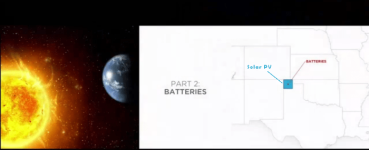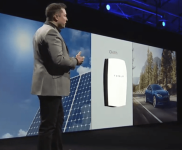If you have solar, in the future having one of these will be essential.
Right now I have net metering on my grid tie in. I am guaranteed it for 5 years, maybe more. My utility charges $.14/kWh for everything I use over my solar production. This is calculated on a monthly basis. If I generate more than I use. I get charged a $4.00 minimum usage fee. Once a year they do an accounting on my total use and production, then refund me only $.04 kWh for excess energy produced that year. I can see the minimum monthly fee doubling or tripling in the near future and net metering eliminated.
Without net metering (and state and fed rebates) going solar wouldn't make financial sense. In about 2-3 more years my system will be paid off so I will be able to buy one of Musk's batteries and do without any grid tie in if I have to.
I am going to buy a gen 2 Chevy Volt when they come out in a couple months. This will use up my excess power generation so maybe I am going to have to add one or two more panels. I might get away with what I have now. I hate having to pay that minimum monthly charge but won't mind paying a very small electric bill seeing as how I will be eliminating gasoline expenses.
BTW: the Volt will go about 5 miles per kWh. I will be driving <50 miles/day
Right now I have net metering on my grid tie in. I am guaranteed it for 5 years, maybe more. My utility charges $.14/kWh for everything I use over my solar production. This is calculated on a monthly basis. If I generate more than I use. I get charged a $4.00 minimum usage fee. Once a year they do an accounting on my total use and production, then refund me only $.04 kWh for excess energy produced that year. I can see the minimum monthly fee doubling or tripling in the near future and net metering eliminated.
Without net metering (and state and fed rebates) going solar wouldn't make financial sense. In about 2-3 more years my system will be paid off so I will be able to buy one of Musk's batteries and do without any grid tie in if I have to.
I am going to buy a gen 2 Chevy Volt when they come out in a couple months. This will use up my excess power generation so maybe I am going to have to add one or two more panels. I might get away with what I have now. I hate having to pay that minimum monthly charge but won't mind paying a very small electric bill seeing as how I will be eliminating gasoline expenses.
BTW: the Volt will go about 5 miles per kWh. I will be driving <50 miles/day



